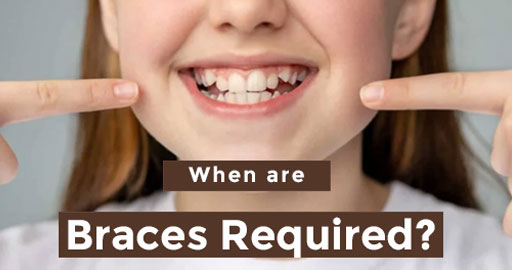
When are Braces Required?
Orthodontic braces, commonly referred to as simply “braces,” are dental devices designed to address a variety of dental and orthodontic issues. While they are most commonly associated with straightening crooked teeth, braces serve a broader range of purposes.
The decision to get braces is influenced by various factors, including oral health, aesthetics, and functional concerns. In this comprehensive guide, we will explore when braces are required, the different types of orthodontic problems they can address, and the benefits of undergoing orthodontic treatment.
Understanding Orthodontic Problems
Before delving into when braces are required, it’s essential to understand the various orthodontic problems that braces can help address.
1. Malocclusion

Malocclusion, or improper alignment of the teeth and jaws, is a common reason for braces. It includes conditions such as overbites, underbites, crossbites, and open bites. These issues can affect not only the appearance of the smile but also the ability to bite, chew, and speak properly.
2. Crowded Teeth
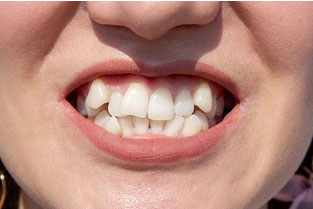
Crowded teeth occur when there is insufficient space in the jaw for all the teeth to fit comfortably. This can lead to misalignment and difficulty in maintaining proper oral hygiene, making braces necessary to create space and straighten the teeth.
3. Spacing Issues
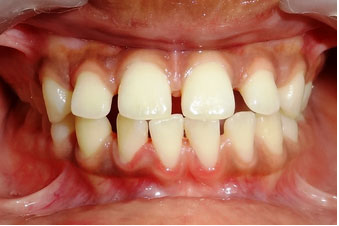
Conversely, spacing issues occur when there are gaps or spaces between teeth. These gaps can be due to missing teeth or naturally occurring spacing problems. Braces can help close these gaps for both aesthetic and functional reasons.
4. Crooked Teeth

Crooked teeth are a common concern for individuals seeking orthodontic treatment. They not only affect appearance but can also lead to oral health issues and difficulty in cleaning the teeth properly.
Indications for Braces
Now that we’ve covered some common orthodontic problems, let’s explore the specific indications that may necessitate getting braces.
1. Age and Growth
Orthodontic treatment can begin at almost any age, but it is most effective during childhood and adolescence when the jaw is still growing. Braces are often recommended for children with severe orthodontic issues, but adults can also benefit from treatment.
2. Pain and Discomfort
Orthodontic problems can lead to pain and discomfort in the jaw, head, and neck. Braces can alleviate these symptoms by correcting the underlying issues.
3. Difficulty Eating and Speaking
Malocclusion and misaligned teeth can make eating and speaking difficult. Braces can improve bite alignment, making it easier to enjoy a wide range of foods and communicate clearly.
4. Aesthetic Concerns
Many people seek braces for aesthetic reasons. Straightening crooked teeth and aligning the jaws can significantly enhance one’s smile and boost self-confidence.
Types of Braces
There are several types of braces available to address orthodontic issues. The choice of braces depends on individual needs, preferences, and the severity of the orthodontic problem. Let’s explore some common types:
1. Traditional Braces
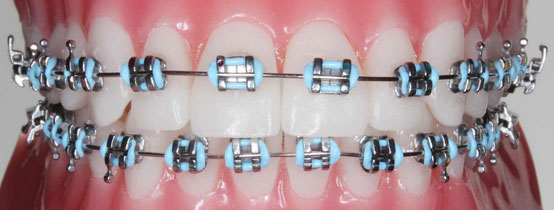
Traditional braces consist of metal brackets and wires. They are highly effective for addressing a wide range of orthodontic issues and are often the most affordable option.
2. Ceramic Braces
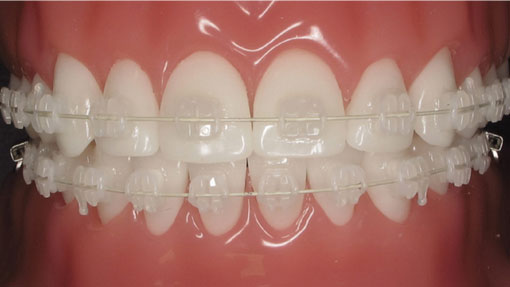
Ceramic braces are similar to traditional braces but use tooth-colored or clear brackets, making them less noticeable. They are a popular choice for those concerned about the aesthetics of metal braces. Ceramic braces are comparatively costlier than traditional metal braces.
3. Lingual Braces
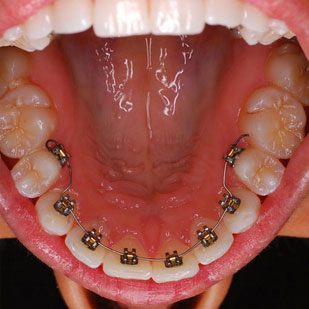
Lingual braces are placed on the backside of the teeth, making them virtually invisible. They are an excellent choice for individuals who want a discreet orthodontic solution.
4. Invisalign

Invisalign is a popular alternative to traditional braces. It consists of a series of clear, removable aligners that gradually move the teeth into the desired position. Invisalign is often preferred by adults and teenagers looking for a more flexible and aesthetically pleasing option.
Benefits of Getting Braces
Understanding the benefits of getting braces can motivate individuals to seek orthodontic treatment. Here are some key advantages:
1. Improved Oral Health
Straight teeth are easier to clean, reducing the risk of tooth decay and gum disease. Proper alignment also improves bite function, reducing the risk of jaw pain and TMJ disorders.
2. Enhanced Aesthetics
A straight and aligned smile can boost self-esteem and confidence, leading to improved social and professional interactions.
3. Better Chewing and Speaking
Orthodontic treatment can improve bite alignment, making it easier to chew food and speak clearly.
4. Prevention of Future Issues
Addressing orthodontic problems early can prevent more severe dental and jaw issues from developing later in life.
Conclusion
Braces are a valuable orthodontic tool that can address a wide range of dental and jaw alignment issues. Whether for aesthetic reasons, oral health concerns, or functional improvements, braces offer numerous benefits.
If you or a loved one are considering orthodontic treatment, consult with an experienced orthodontist at a dental clinic near you to determine the best course of action. Remember that the decision to get braces should be based on individual needs and preferences, and the end result—a healthy, beautiful smile—is well worth the investment in time and effort.
Leave a Reply
Leave a Reply
Explore More Similar Posts
Explore More Blogs


Leave a Reply